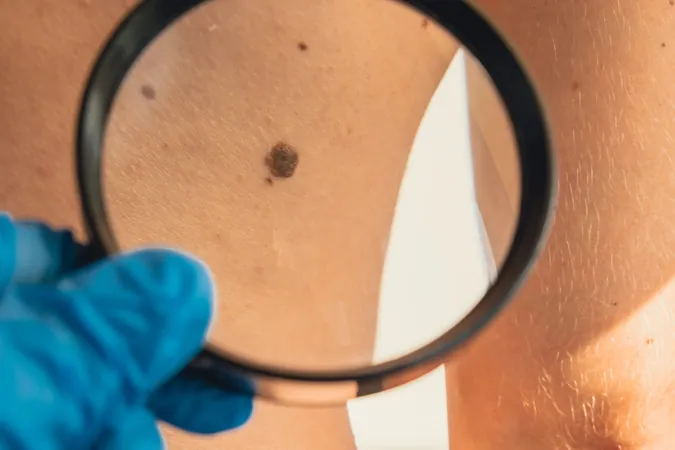
Revolutionary Advances in Skin Cancer Diagnostics Set to Transform Patient Care
2025-04-10
Author: Mei
A New Era in Skin Cancer Detection?
As skin cancer rates continue to climb alarmingly worldwide, groundbreaking diagnostic technologies are emerging to enhance patient outcomes and streamline treatments. A game-changing review published in the *Global Challenges* journal shines a spotlight on the innovative potential of Raman spectroscopy, a technique capable of identifying molecular vibrations linked to skin cancer.
Harnessing the Power of AI and Machine Learning
The authors advocate for the integration of Raman spectroscopy with cutting-edge artificial intelligence (AI) and machine learning. This powerful combination could empower primary care clinicians to detect and manage skin cancer with unprecedented accuracy and speed.
Staggering Statistics: Nonmelanoma Skin Cancer on the Rise
Each year, nearly 2 million cases of nonmelanoma skin cancer are reported, according to the World Health Organization. However, study lead author Pola Goldberg Oppenheimer, MSc, PhD, from the University of Birmingham, believes the true figures could be significantly higher, with many instances going undiagnosed. This alarming trend positions nonmelanoma skin cancer among the top five most prevalent cancers globally.
Current Diagnostic Challenges: A Call for Innovation
The existing landscape of skin cancer diagnosis is fraught with challenges. Despite extensive screening initiatives in Europe and the U.S., outcomes have been inconsistent, making traditional self-reporting and physical examinations the principal methods of identification. The gold standard—painful biopsies—remains costly, underscoring an urgent need for innovative solutions.
Raman Spectroscopy: Noninvasive and Promising
Raman spectroscopy employs laser technology to unravel the 'molecular fingerprints' within a patient’s skin samples. When combined with AI, this method can detect anomalies indicative of skin cancer without causing any harm. Remarkably, research from 2012 demonstrated its ability to differentiate between skin cancers, precancers, and benign lesions with impressive accuracy.
Regulatory Hurdles and Portability Issues
Despite its potential, Raman spectroscopy faces significant regulatory challenges. Neither the U.S. nor the U.K. has approved any Raman-based devices for exclusive diagnostic use, hindering their integration into clinical practice. Furthermore, the bulkiness of these machines has historically limited their portability—although strides toward creating portable versions for fields like forensics are promising.
The Future: Noninvasive Diagnosis Taking Center Stage
Looking ahead, Oppenheimer and her team envision a future where painful biopsies are relegated to a last resort, supplanted by rapid, noninvasive diagnostic technologies at the point of care. The versatility of Raman technology extends beyond dermatology, potentially revolutionizing emergency medicine, neurology, psychiatry, ophthalmology, and gastroenterology.
A Transformative Shift in Patient Care
The researchers concluded that leveraging advanced technologies like Raman spectroscopy can enhance early detection and boost recovery rates for skin cancer patients. 'The integration of these innovative diagnostic tools into clinical practice will herald a transformative leap forward in skin cancer diagnostics in the coming years,' they asserted.


 Brasil (PT)
Brasil (PT)
 Canada (EN)
Canada (EN)
 Chile (ES)
Chile (ES)
 Česko (CS)
Česko (CS)
 대한민국 (KO)
대한민국 (KO)
 España (ES)
España (ES)
 France (FR)
France (FR)
 Hong Kong (EN)
Hong Kong (EN)
 Italia (IT)
Italia (IT)
 日本 (JA)
日本 (JA)
 Magyarország (HU)
Magyarország (HU)
 Norge (NO)
Norge (NO)
 Polska (PL)
Polska (PL)
 Schweiz (DE)
Schweiz (DE)
 Singapore (EN)
Singapore (EN)
 Sverige (SV)
Sverige (SV)
 Suomi (FI)
Suomi (FI)
 Türkiye (TR)
Türkiye (TR)
 الإمارات العربية المتحدة (AR)
الإمارات العربية المتحدة (AR)